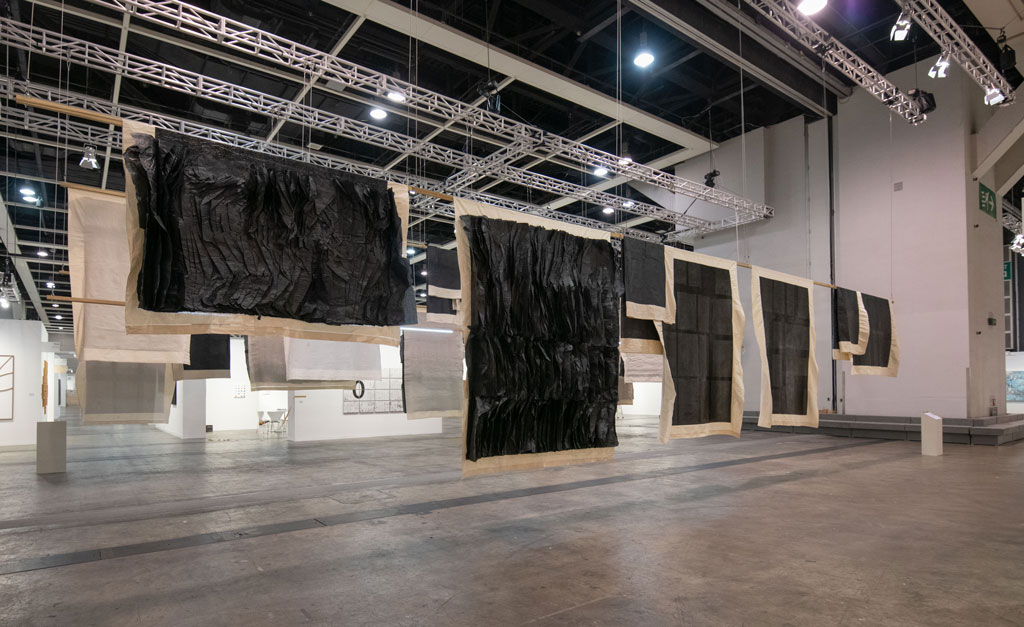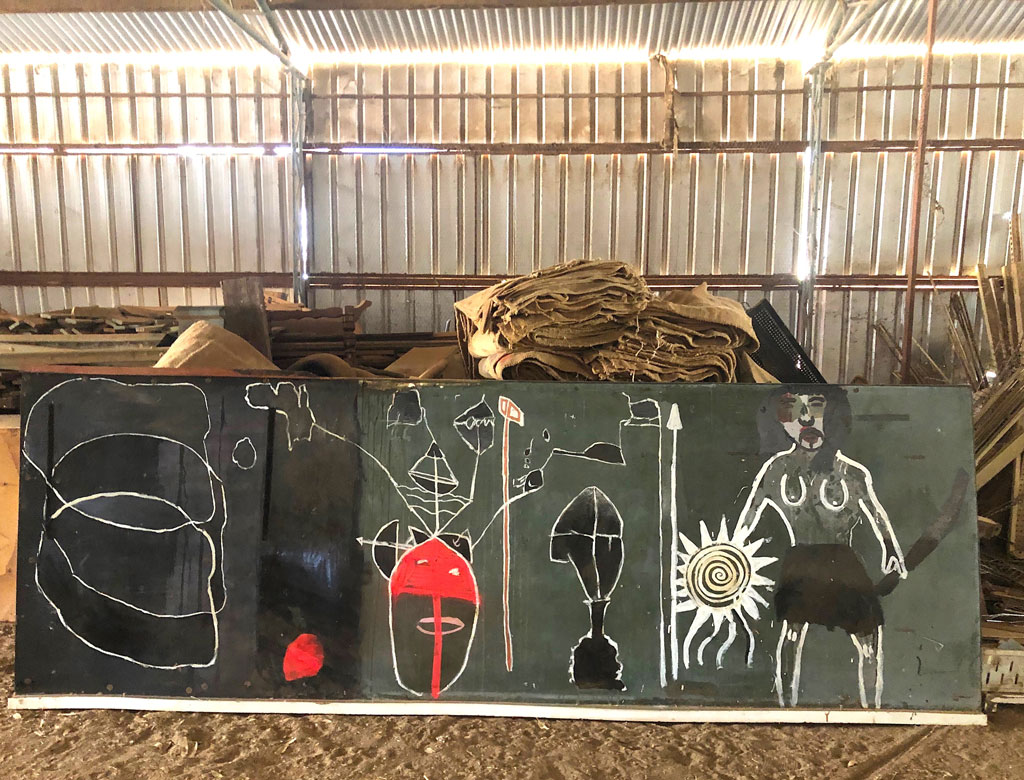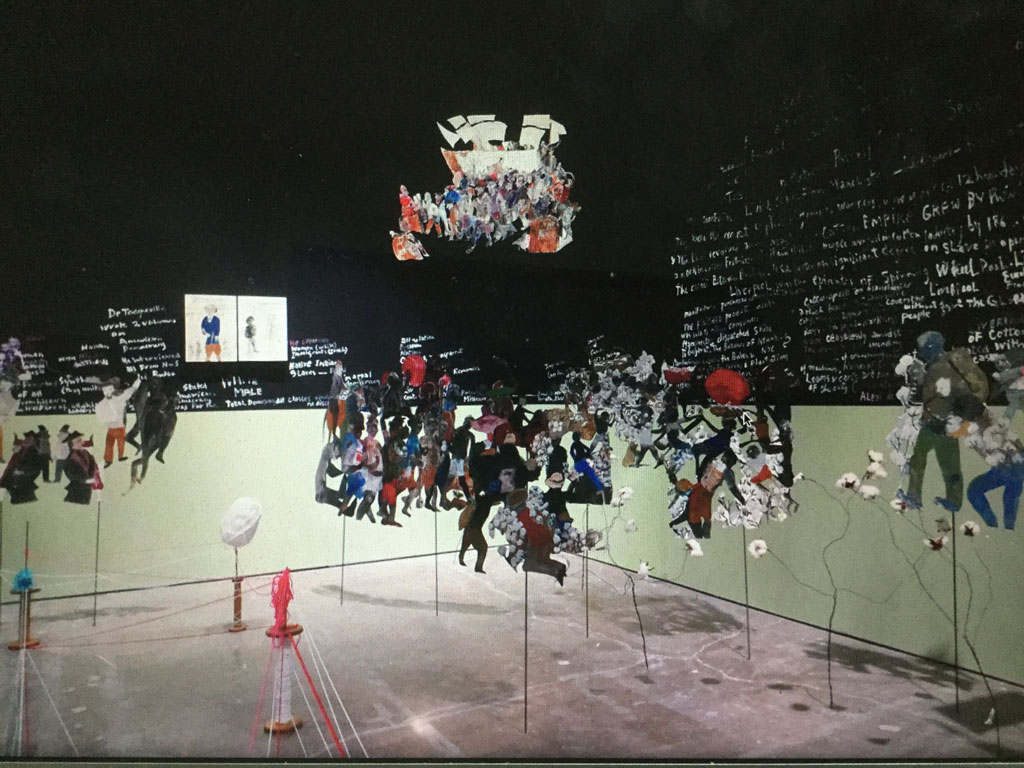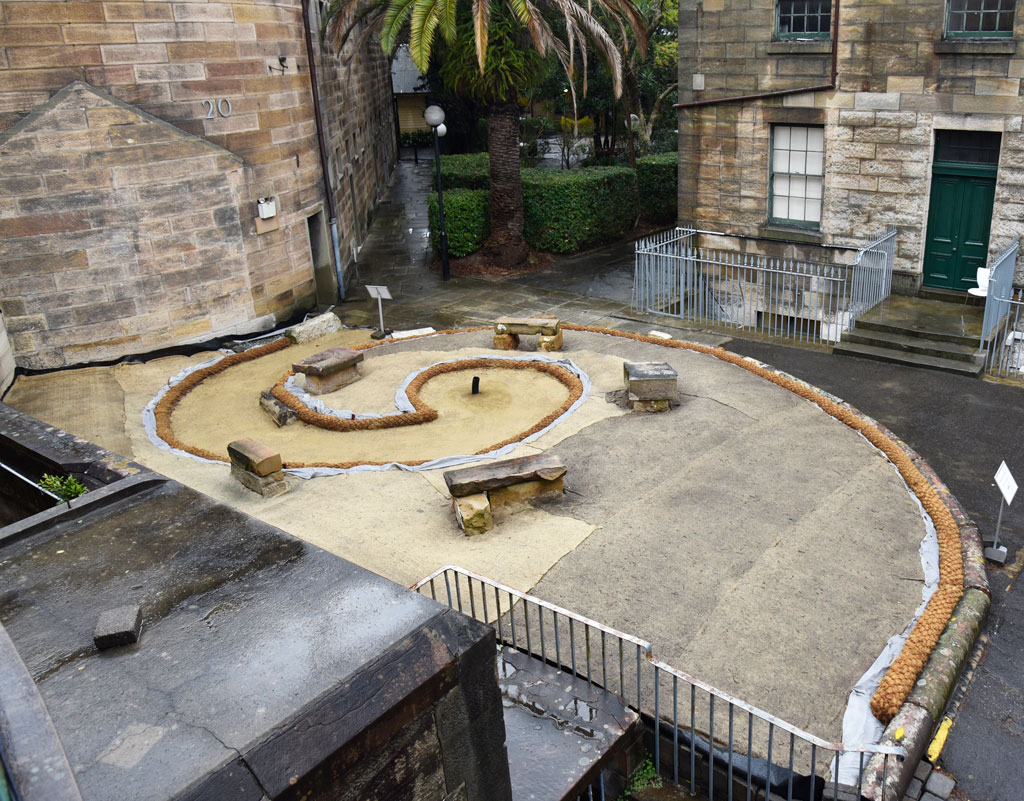BIENNALS:22nd Sydney Biennale
 The inaugural Biennale of Sydney was held in 1973 as part of the opening celebrations of the Sydney Opera House. Initiated by Founding Governor Franco Belgiorno-Nettis and supported by Founding Patrons Transfield Holdings, the Biennale of Sydney was the first exhibition of its kind to be established in the Asia-Pacific region. Alongside the Venice and São Paulo biennales and documenta, it is one of the longest running periodic exhibitions around the globe.
The inaugural Biennale of Sydney was held in 1973 as part of the opening celebrations of the Sydney Opera House. Initiated by Founding Governor Franco Belgiorno-Nettis and supported by Founding Patrons Transfield Holdings, the Biennale of Sydney was the first exhibition of its kind to be established in the Asia-Pacific region. Alongside the Venice and São Paulo biennales and documenta, it is one of the longest running periodic exhibitions around the globe.
By Efi Michalarou
Photo: Sydney Biennale Archive
Free and open to the public, the 22nd edition of Sydney Biennale presents a diverse range of contemporary artworks spanning from video and photography to installations and performances, across six different venues in Sydney: Art Gallery of New South Wales, Artspace, Campbelltown Arts Centre, Cockatoo Island, Museum of Contemporary Art Australia and the National Art School. Under the artistic direction the Indigenous Australian artist Brook Andrew, this expansive exhibition of contemporary art and events brings together the work of more than 100 international artists, many of which have been specifically commissioned for the occasion. Acting as a plural space to gather and to share, to disrupt and re-imagine, it will engage visitors to challenge dominant narratives and propose new futurisms and paths to healing. Titled “NIRIN” or edge – a word of Andrew’s mother’s Nation, the Wiradjuri people of western New South Wales, the exhibition addresses themes of sovereignty, healing and transformation. Arthur Jafa, recently awarded the Golden Lion at the 58th Venice Biennale, presents his seminal work “The White Album”. Karla Dickens presents an immersive installation in the vestibule of the Gallery that is an observation on the disproportional number of Indigenous women in refuges and correctional centres all around Australia. • Multi-disciplinary artist Joël Andrianomearisoa presents a suite of large-scale, sheer textile works that will transform spaces in both the Art Gallery of New South Wales and Museum of Contemporary Art Australia. Barbara McGrady delves into her extensive photographic archive to curate her life’s work and re-present it as a kaleidoscopic compendium of Aboriginal contemporary history. Collectively titled “Ngiyaningy Maran Yaliwaunga Ngaara-li” (Our Ancestors Are Always Watching), a selection of photographs is presented at Art Gallery of New South Wales and as a major immersive installation at Campbelltown Arts Centre. Fátima Rodrigo Gonzales presents a recreation of an iconic TV set from the 1960s Latin TV show ‘Sabado Gigante’ (Gigantic Saturday). Ibrahim Mahama presents “A Grain of Wheat” at Artspace, a display of rolled-up medical stretchers that are a result of Mahama’s interest in labour and collective enterprise, and at Cockatoo Island, Mahama will present a large-scale installation of sewn coal sacks, that speak to his investigation of the conditions of supply and demand in African markets. Lawrence Abu Hamdan presents “Once Removed”, an audio-visual work that chronicles the testimony of a young historian, Bassel Abi Chahine. On Cockatoo Island, Nicholas Galanin presents an excavation of the shadow cast by the Captain Cook statue in Sydney’s Hyde Park to reveal what the land holds beneath the surface. At the Art Gallery of New South Wales, Galanin also presents the video work “Tsu Héidei Shugaxtutaan” (We Will Again Open This Container of Wisdom That Has Been Left in Our Care), Part I and II, 2006. At the Museum of Contemporary Art Australia, Aziz Hazara premieres a new video installation “Bow Echo” investigating the relationship between people and sites of trauma. Huma Bhabha uses found materials and the detritus of everyday life to create haunting human figures. Visual activist and photographer Zanele Muholi presents three bodies of work that look at the politics of race, gender and sexuality. At the National Art School in Darlinghurst, Andrew Rewald presents “Alchemy Garden”, an outdoor interactive community garden he has built from repurposed materials. It will evolve throughout the exhibition period, growing native and non-native edible plants to examine how ethnobotanicals connect people and their actions to place. In collaboration with Canadian academic and artist Randy Lee Cutler, the pair will present Mineral Garden, an installation exploring the secret life of plants and minerals. The 22nd Biennale of Sydney’s program of events includes aabaakwad 2020 NIRIN. Presented with the Art Gallery of Ontario, aabaakwad (it clears after a storm) is centred on informal, in-depth conversations between international First Nations artists, and other artists, curators and scholars from Australia, New Zealand, the United States and Canada. The featured artists, curators and thinkers taking part include: Wanda Nanibush, Adrian Stimson, Vernon Ah Kee, Lisa Reihana, Biung Ismahasan and more. The event will run at the Museum of Contemporary Art Australia, Cockatoo Island and Sydney Opera House (14–17 March). Ramin Haerizadeh, Rokni Haerizadeh and Hesam Rahmanian present “I Prefer Talking to Doctors About Something Else” at the Powerhouse Museum (14 March–8 June). This collaborative work is created using objects from the museum’s collection. Incorporating and disorganising unexpected artefacts such as space satellites, anatomical models and furniture design, the artists make a sweeping arc across themes of grief, the human body and healing. Visitors are invited to view the collaborative installation process from 2–6 and 9–13 March. •
Info: Artistic Director: Brook Andrew, 22nd Biennale of Sydney, Duration: 14/3-8/6/20, Venues: Various, Admission: Free, www.biennaleofsydney.art

Right: Adrian Stimson, Buffalo Boy, 2004, 35mm black-and-white photograph. Photograph: Ian Grove. Courtesy the artist
![3.Nicholas Galanin, Tsu Heidei Shugaxtutaan Part II [We Will Again Open This Container of Wisdom That Has Been Left In Our Care Part II], 2006 (video still) single channel video, 4:06 mins, Courtesy the artist](http://www.dreamideamachine.com/web/wp-content/uploads/2020/03/AMG.jpg)





![Lisa Reihana, In Pursuit of Venus [infected], 2015–17, (detail) ultra HD video, colour, 7.1 sound, 64 mins, Courtesy the artist and New Zealand at Venice](http://www.dreamideamachine.com/web/wp-content/uploads/2020/03/1.jpg)
